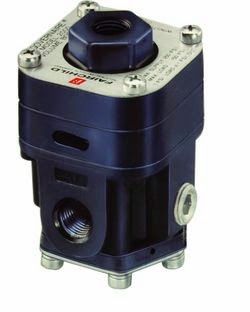Local sales engineering firms play a pivotal role in the industrial landscape, particularly in specifying and applying industrial instruments, controls, and valves. These firms serve as the critical bridge between the regional industrial account base and the manufacturers of these specialized products, ensuring that both sides achieve their objectives efficiently and effectively.
For regional industrial customers, a local sales engineering firm offers invaluable expertise. These firms possess a deep understanding of the unique needs and challenges faced by industries in their specific geographic area. Whether it's a chemical plant, a food processing facility, or a power generation station, the demands of these operations vary significantly depending on local regulations, environmental conditions, and the specific processes employed. A local sales engineering firm can provide tailored solutions that consider these factors, helping customers select the most appropriate instruments, controls, and valves for their applications. This tailored approach not only enhances operational efficiency but also ensures compliance with local standards and regulations, reducing the risk of costly mistakes.
Moreover, the close proximity of these firms allows for more immediate and personalized support. When an industrial customer encounters a problem or needs assistance with the installation or maintenance of equipment, a local sales engineering firm can respond quickly, minimizing downtime and ensuring that operations continue smoothly. This level of service, often unattainable when dealing with distant manufacturers or larger, less specialized distributors, fosters strong relationships with customers, ultimately leading to increased trust and loyalty.
On the other side of the equation, manufacturers of process instruments and valves benefit immensely from their partnerships with local sales engineering firms. These firms serve as their eyes and ears on the ground, providing crucial insights into regional market trends, customer preferences, and emerging opportunities. By leveraging the local firm's knowledge and relationships, manufacturers can better tailor their products to meet the specific needs of different markets. This enhances the relevance of their offerings and enables them to compete more effectively in the regional marketplace.
Furthermore, local sales engineering firms are an extension of the manufacturer's sales and support teams. They possess a deep understanding of the manufacturer's product lines, technical specifications, and applications, allowing them to communicate these details to potential customers effectively. This expertise is critical during the specification phase, where the correct selection of instruments, controls, and valves can make the difference between a successful project and a costly failure. By ensuring that customers receive accurate and relevant information, local firms help manufacturers build a strong reputation for reliability and performance in the regions they serve.
The importance of a local sales engineering firm in the industrial sector cannot be overstated. These firms provide essential support to regional industrial customers and manufacturers, ensuring the right products are specified, applied, and maintained effectively. Their deep local knowledge and close relationships with customers and manufacturers make them indispensable partners in the complex and demanding world of industrial instrumentation and control.
https://msjacobs.com
800-348-0089




